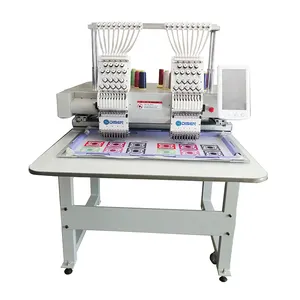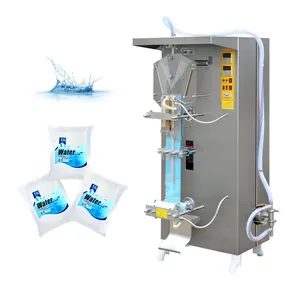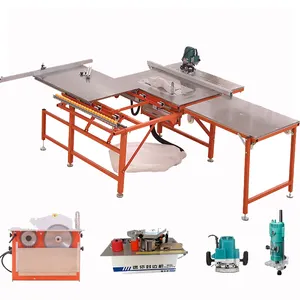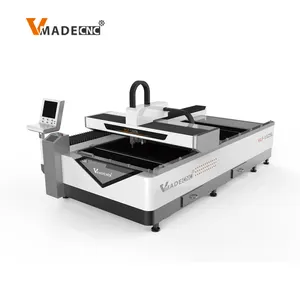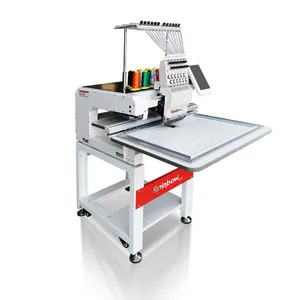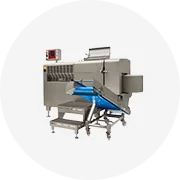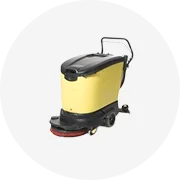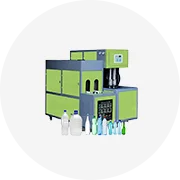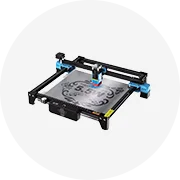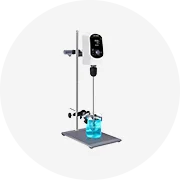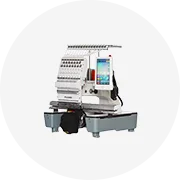Popular na sua indústria


Personalizado Personalizado Transparente Lettering Brand LOGO Transferência UV Embalagem Etiqueta Impressão Crystal Paste Labels For Bottle Jar
€ 0,0094 - € 0,1303
Pedido Mínimo: 500 Peças


Etiquetas personalizadas de roupas, etiquetas de roupas feitas sob encomenda, nome da marca, etiquetas de vestuário tecido para roupas
€ 0,0094 - € 0,2791
Pedido Mínimo: 100 Peças

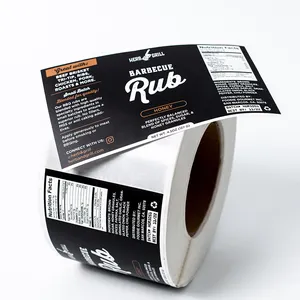





Etiquetas adesivas biodegradáveis jarra de mel personalizada, etiquetas autocolante de rolo para recipientes de alimentos, garrafas de vidro
€ 0,0187 - € 0,1303
Pedido Mínimo: 500 Peças







Custom Private Logo Garment Fabric Label 100% Organic Cotton High Density Jacquard Clothes Satin Woven Tag Clothing Woven Labels
€ 0,0094 - € 0,1861
Pedido Mínimo: 100 Peças







Rotulagem automática quadrado plana garrafa rotulagem máquina rotuladora
€ 3.534,42
Pedido Mínimo: 1 Conjunto







Logotipo De Marca Personalizado Etiqueta Do Pescoço Do Vestuário De Alta Qualidade Roupas Etiquetas Tecidas Para Roupas T-Shirt Tag Tecida
€ 0,0094 - € 0,1861
Pedido Mínimo: 100 Peças







Canetas marcadoras de giz branca, pacote de 5, para quadro de pintura preto não poroso, 6mm ponta cinzel de lápis-24 etiquetas incluídas
€ 0,2512 - € 0,2791
Pedido Mínimo: 5000 Peças






6 milímetros cinzel ponta Marcador Giz Pene capaz de obter a nossa própria marca impressa sobre os marcadores com próprio cliente etiqueta no pacote
€ 0,2791 - € 0,5581
Pedido Mínimo: 100 Peças


Caneta marcador colorida fluorescente para escritório, produtos de papelaria para escola e escritório
€ 0,1861
Pedido Mínimo: 5000 Peças






30 cores brilhantes apagáveis quadro pintura canetas com 24 etiquetas quadro, 5 etiquetas, 1 pano
€ 0,2512 - € 0,2791
Pedido Mínimo: 5000 Peças




Caneta marcador colorida fluorescente para escritório, produtos de papelaria para escola e escritório
€ 0,1861
Pedido Mínimo: 5000 Peças






Canetas marcadoras de giz para quadro, placas, janelas, quadro negro, vidro, espelhos, líquidos, canetas de 8 cores e 24 etiquetas - Apagáveis a seco e molhado
€ 0,2233 - € 0,2512
Pedido Mínimo: 5000 Peças
Buscas Relacionadas:






32 cores Liquid Chalk Marker Set Apagável Quadro Pintura Caneta com 24 Etiqueta Quadro
€ 0,2512 - € 0,2791
Pedido Mínimo: 5000 Peças






Etiquetas de cabo elétrica de plástico colorido, etiquetas de fio, etiquetas, marcador de cabo lan, manga de clipe, tubo de placa de cabo de rede
Pronto para enviar
€ 0,9302 - € 1,38
Pedido Mínimo: 1 Saca
Envio por peça: € 14,28
- 10%






VENALISA Liner Gel Set Kit DIY Nail Art Pintura desenhar unhas de gel 8ml Liner Gel Polonês Kit 2021 Atacado Private Label 7pcs caixa de Presente
Pronto para enviar
€ 4,02 - € 4,44
Pedido Mínimo: 1 Conjunto
Envio por peça: € 26,39






Private Label Soak Off Longa Duração Não Amarelamento Primer Base Profissional Saudável
€ 1,76 - € 1,94
Pedido Mínimo: 20 Peças






GULAURI Atacado Natural Óleo De Unhas Perfumado Nutrir Óleo De Cutícula Cuidados Com As Unhas Óleo De Armadura 5 Flor Perfumado Private Label
€ 6,98 - € 25,12
Pedido Mínimo: 2 Peças






OEM 90 Cores JR Borboleta Nail Polish Private Label UV Gel Semi Curado Longa Duração Soak off Gel Polish
€ 0,586 - € 0,6976
Pedido Mínimo: 90 Peças






A3 A4 A5 Private Label desenho do logotipo Caixa de Luz Iluminado luz pad profissional ultra-fino led light pad tracing board
€ 1,77 - € 9,21
Pedido Mínimo: 10 Unidades






OEM 60 Cores JR Nail Polish Private Label UV Gel Semi Curado Longo Durador Soak off Magnetic Gel Polish
€ 0,6325 - € 0,7906
Pedido Mínimo: 60 Peças


Conjunto de primer e desidratador para unhas, primer de ar livre de ácido e gel UV para unhas, casaco de marca própria, com logotipo personalizado
Pronto para enviar
€ 0,9302 - € 1,13
Pedido Mínimo: 10 Peças
Envio por peça: € 12,28






Colar para cílios, copos de cola para cílios rosa, etiqueta privada de alta qualidade, copos para pigmento de maquiagem permanente, 100 peças
Pronto para enviar
€ 0,3535 - € 0,4372
Pedido Mínimo: 50 Sacas
Envio por peça: € 0,6232






Mini sistema de microfone com fio omni-direcional, etiqueta privada personalizada, com presilha para gola de lavalier, sistema de microfone com fio
Pronto para enviar
€ 1,86 - € 3,72
Pedido Mínimo: 1 Peça
Envio por peça: € 10,92






Esmalte em gel para unhas com 180 cores, verniz para manicure com etiqueta privada uv, em gel colorido, para mergulhar
Pronto para enviar
€ 0,4279 - € 0,5488
Pedido Mínimo: 12 Peças
Envio por peça: € 3,88






Private Label Amostra Grátis Borracha Base Coat gel polonês Novo Hema Glitter Reflexivo 15ML Gel Nail Polish
€ 0,5581 - € 1,12
Pedido Mínimo: 2 Peças






ZRKGEL fornecedores profissionais de unhas OEM/ODM 1kg 5kg 10kg atacado um passo de imersão de marca própria UV/LED esmalte de unhas em gel
€ 1,31 - € 40,00
Pedido Mínimo: 2 Quilogramas






Microfone sem fio tipo c lavalier 2.4g, com gola de gravata dupla, para celular android, vlogs k11
Pronto para enviar
€ 3,47 - € 5,83
Pedido Mínimo: 1 Peça
Envio por peça: € 6,68






ELAIMEI evitar tatuagem desbotamento ajuda a curar private label vegan orgânico 100% natural tatuagem bálsamo, tatuagem pós-tratamento manteiga
Pronto para enviar
€ 0,9302 - € 1,47
Pedido Mínimo: 1 Peça
Envio por peça: € 13,96






Morandi aquarela uv led 100 peças, marca privada, 12 cores, unhas florescentes, mármore, esmalte de gel para arte em unhas
Pronto para enviar
€ 1,45 - € 1,59
Pedido Mínimo: 1 Peça
Envio por peça: € 26,84






Cabo de extensão trançado para copiadora, porta quadrada, fio de extensão, impressora de etiquetas
€ 1,39 - € 2,32
Pedido Mínimo: 3 Peças






Esmalte em gel para unhas profissionais, suprimentos para unhas em gel com 2000 cores, etiqueta privada de 15ml/10/7, 3ml, esmalte em gel uv/led
Pronto para enviar
€ 1,77 - € 3,26
Pedido Mínimo: 12 Peças
Envio por peça: € 2,32






Cabo macho para fêmea m12 6 pinos de código c, sobremoldado, à prova d'água
€ 6,51 - € 13,95
Pedido Mínimo: 500 Peças






M5 M8 M12 M16 M23/2/3/4/5/8/12/17 Pinos Cabo Ip68 M12 para RJ45 A B C D Codificação Código Ip67 Ip68 Circular Conector À Prova D' Água
€ 1,86 - € 9,30
Pedido Mínimo: 20 Peças






Microfone sem fio 2.4g, com gravata dupla, com gola, microfone de lapela tipo c, menor, lavalier, para android, celular vlog
Pronto para enviar
€ 3,47 - € 5,83
Pedido Mínimo: 1 Peça
Envio por peça: € 6,68






6 cores 2024 Gel de base de borracha para esmalte de noite luminescente em resina C brilho no escuro
Pronto para enviar
€ 0,493 - € 0,6325
Pedido Mínimo: 12 Peças
Envio por peça: € 1,32






Cola de gel de marca própria em tubo UV/gel LED para pontas de unhas cola adesiva para salão de beleza e DIY doméstico Pronto para enviar
Pronto para enviar
 Pronto para enviar
Pronto para enviar€ 0,4465 - € 0,6139
Pedido Mínimo: 130 Peças
Envio por peça: € 0,3349






OEM 60 Cores JR Nail Polish Private Label UV Gel Semi Curado Longa Duração Soak off Gel Polish
€ 0,586 - € 0,6976
Pedido Mínimo: 60 Peças






RTS unha polonês Private Label kit Gel UV 10ml Soak off Gel polonês 120 cores 2base 2top 1 top fosco e 30 cores em um grupo
Pronto para enviar
€ 13,96 - € 16,75
Pedido Mínimo: 4 Peças
Envio por peça: € 8,05






GULAURI Escova de unhas profissional acrílica com cabo de metal para manicure e cristal, escova de unhas de marca própria para salão de beleza
€ 2,56 - € 7,35
Pedido Mínimo: 2 Peças






Não-Wipe Clear Nail Gel Casaco Brilhante Gel Private Labels Velvet Top Rubber Matte Top Coat
€ 1,90 - € 2,19
Pedido Mínimo: 10 Peças
Principais categorias
Sobre c rotuladores
Alcance precisão e eficiência na atividade agrícola e de cultivo com o auxílio de poderosos e avançados. c rotuladores de Alibaba.com. Estes únicos e deslumbrantes. c rotuladores são adequados para agricultura de todos os tamanhos e escalas. São de grande ajuda nas muitas ações necessárias em uma fazenda, como a semeadura e a manutenção diária da área cultivada. Estes. c rotuladores utiliza tecnologia robusta que reduz significativamente a possibilidade de quebras. Eles são incrivelmente fáceis de manter e não é necessário gastar muito para mantê-los.
Selecione a partir de uma ampla gama de eficientes e orientados para o desempenho. c rotuladores que ajuda a concluir várias atividades distintas. Entre outras coisas, ajudam a soltar o solo, abrir valas, capinar e arar o jardim. Estes. c rotuladores estão disponíveis em vários modelos e vêm com motores potentes e eficientes que não fazem ruído e têm velocidade de trabalho mais rápida. Estes. c rotuladores têm chassis fortes e são oferecidos nas versões elétrica, a gasolina e diesel para uma experiência personalizada.
Escolha entre os variados. c rotuladores em Alibaba.com para uma experiência perfeita que pode ajudar a aumentar a produtividade e o rendimento. Escolha o certo. c rotuladores de uma diversidade de modelos, cores, capacidades e recursos. Esses produtos avançados têm altos níveis de segurança e apresentam motores de 4 tempos com transmissões automáticas ou semiautomáticas. Estes. c rotuladores pode ser usado para a agricultura em qualquer tipo de terreno e condição climática, tornando-os indispensáveis para qualquer pessoa envolvida na agricultura.
Alibaba.com oferece um amplo domínio de sedutor. c rotuladores para se ajustar a seu orçamento e especificações técnicas. Com esses descontos atraentes ,. Fornecedores de c rotuladores podem considerar comprar em grandes quantidades e estocar essas máquinas brilhantes. Eleve sua experiência agrícola hoje.
Selecione a partir de uma ampla gama de eficientes e orientados para o desempenho. c rotuladores que ajuda a concluir várias atividades distintas. Entre outras coisas, ajudam a soltar o solo, abrir valas, capinar e arar o jardim. Estes. c rotuladores estão disponíveis em vários modelos e vêm com motores potentes e eficientes que não fazem ruído e têm velocidade de trabalho mais rápida. Estes. c rotuladores têm chassis fortes e são oferecidos nas versões elétrica, a gasolina e diesel para uma experiência personalizada.
Escolha entre os variados. c rotuladores em Alibaba.com para uma experiência perfeita que pode ajudar a aumentar a produtividade e o rendimento. Escolha o certo. c rotuladores de uma diversidade de modelos, cores, capacidades e recursos. Esses produtos avançados têm altos níveis de segurança e apresentam motores de 4 tempos com transmissões automáticas ou semiautomáticas. Estes. c rotuladores pode ser usado para a agricultura em qualquer tipo de terreno e condição climática, tornando-os indispensáveis para qualquer pessoa envolvida na agricultura.
Alibaba.com oferece um amplo domínio de sedutor. c rotuladores para se ajustar a seu orçamento e especificações técnicas. Com esses descontos atraentes ,. Fornecedores de c rotuladores podem considerar comprar em grandes quantidades e estocar essas máquinas brilhantes. Eleve sua experiência agrícola hoje.
